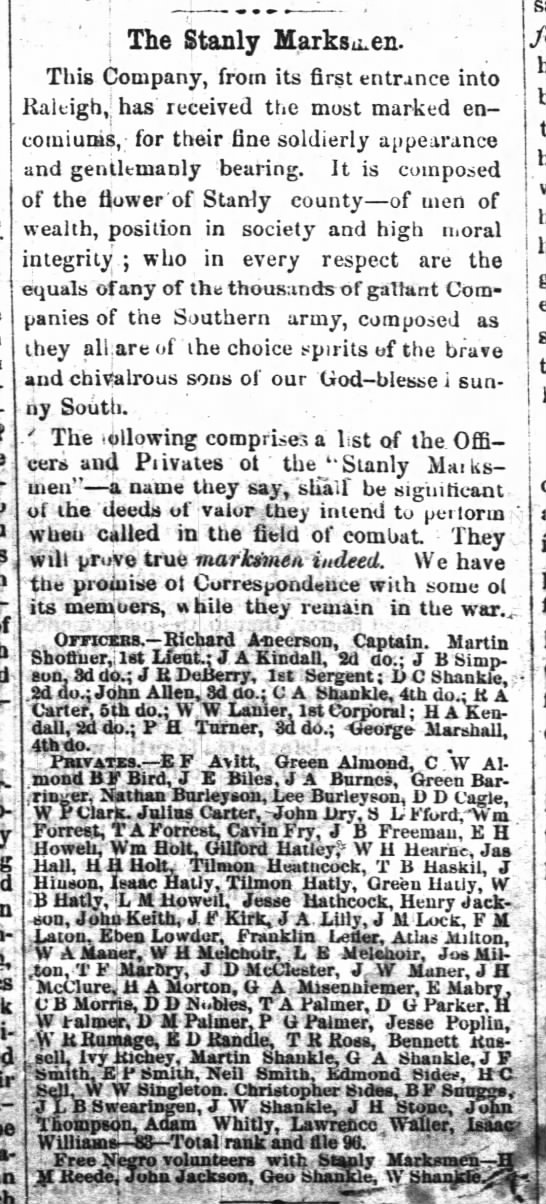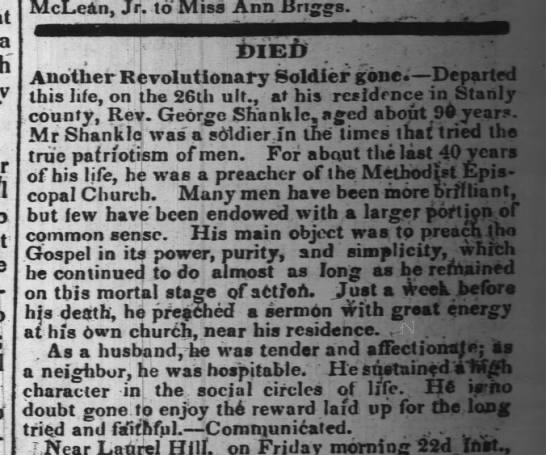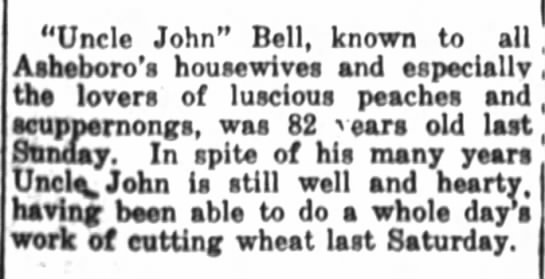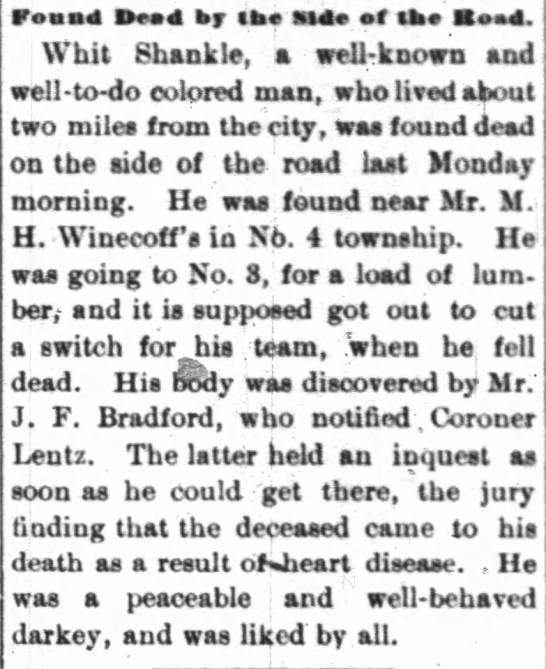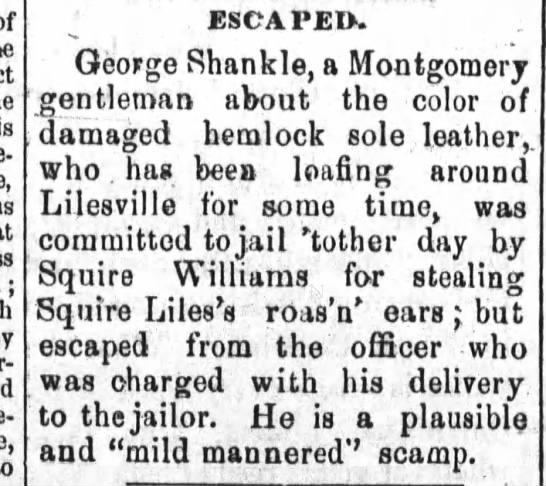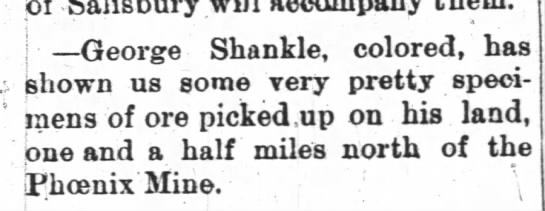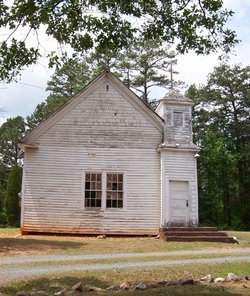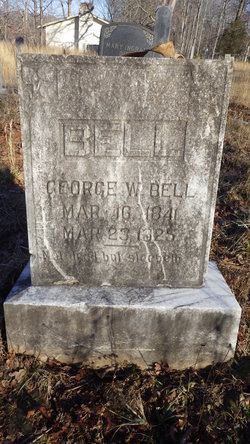On March 22, 2025, at 11 a.m., a group of folks gathered to honor the life and service of Revolutionary War Patriot, Thomas Biles. I was among them.
I am not descended from this family, but having deep Stanly County roots, they were certainly involved in the lives and business of those I am related to.
Zelma Eudy, a Member of the Yadkin River Patriots Chapter of the Daughters of the American Revolution, and a Biles descendant, ordered a commemorative plaque for her Patriot ancestor some 16 years ago. With the placement of this plaque at the New London Town Cemetery, a dream has finally come to fruition.
 |
| The beautifully preserved federal style Biles House in the town of New London, dating back to about 1830 |
In a brief summary, Thomas Biles Jr. (known in the area as Thomas Biles Sr.) was born in New Jersey in 1752. His family afterwards moved to what was then Rowan County, North Carolina. He served as a Private in the Revolutionary War and afterwards, married Miss Tabitha Marbury on March 8, 1783, in Salisbury. About 1797, they moved to Montgomery County, NC and settled on the west side of the river, in what is now Stanly County, near the Narrows of the Yadkin River and the headwaters of Mountain Creek. Old maps of North Carolina show a little town called "Narrowsville" along a northwest to southeast trajectory some few miles off the river and near the Narrows. It was perhaps to this area they came.
Five groups sponsered the event; the Yadkin River Patriots Chapter of the DAR, the Govenor John Archdale Chapter of the Colonial Dames 17th Century, the Colsons Mills Sons of the American Revolution, the Stanly County Genealogical Society, and the Stanly County Historical Assosciation.
Mrs. Wanda Gantt, a member of the Yadkin River Patriots Chapter of the DAR, a member of the Colonial Dames, and President of the Stanly County Genealogical Society, emceed the event. Several Biles family descendants participated in the ceremony by placing flags, and reciting poems, in honor of their distinguished forebearer.
The New London Town Cemetery location was chosen for the placement of the Memorial due to the history of the town to the Biles family. About 1830, Thomas Biles, Jr. (or actually the 3rd, as his grandfather, who did not live in this region, was also a Thomas), known about as "Uncle Tommy", and his wife, Betsy Sides Biles, chose the highest elevation around to build their home and plantation. Soon, a little village grew up around them, with business and enterprise. An academy was established for educational purposes. An old handdrawn map of Bilesville, as the village was known, shows a splattering of about two dozen homes located at the intersection of the "New Salisbury Road" and "the road from Dr. Kendalls to Stokes Ferry". Gold had been found and a tract was labled 'Biles Gold Mine tract' and 'Parker Gold'. Other names on the map show whomelse lived or owned land near the Biles family, that being the Howell Parker family, John Ivey and Henry Ivey. There is also a mention of a previous owner as "Abednego Merryman'. Gold had been discovered on Howell Parkers farm about 1859. Bethel Church provided the religious instruction, located a few miles east, until Bilesville Methodist was established. A school was built in 1884.
Writer Fred T. Morgan of local fame once reported that the name of Bilesville was changed to New London to attract investment and that New London was incorporated by the General Assembly on March 7, 1891 and Bilesville ceased to exist.
Thomas Biles II (Sr.), the patriot, had married Tabitha Marbury in 1783. The name is also seen as Mayberry, Mabry, Marberry, and other various spellings.Their estate papers mentioned nine Biles children:
Isaac Biles, Alexander Biles, Daniel Biles, Thomas Biles III (JR) aka "Uncle Tommy", Francis Biles, William Biles, Sarah Biles Rogers, Udessa Biles Crowell and Lucinda Biles Crowell.
Thomas Biles was 80 years old when he applied for a pension in 1832. One wonders why he waited so long. His case was heard in the Montgomery County, NC , January term of Court in 1833. He stated he volunteered as a Private under Captain Hugh Montgomery in Salisbury, under Captain James Craig near Neighbor and General Rutherford, the Commanding Officer of the Volunteers. He signed up for three months under Montgomery.
He marched from Salisbury to Cross Creek, 'now Fayetteville, 100 miles against the Tories.' Under Craig, he marched from the Valley towns of the Cherokee Nation of Indian Cross and stated that the march was supposed to be 250 miles. He marched across the head of he Catawba River to the foot of Savannah Gap foth the South Regiment, with a company of Warriors from the Catawba Nation. They were ordered to destroy things of use to the Indians, and burnt all houses down and cut down corn. He testified that there was no fighting except with the spies who killed and took 17 Indians prisoner.
Thomas said proof of his service could be provided by Daniel Biles near Salisbury, who was too advanced in years to come to court. This was probably not his son Daniel Biles, but probably his brother or another relative of his own generation.
Thomas stated that he was born in New Jersey about 1750 and was living in Rowan County, NC at the time of his service. His family had came and settled with the Jersey Settlement, which is in Davidson County, but at that time, Davidson was still a part of Rowan. He described the place he first settled as "five miles above Salisbury". He moved from there to Montgomery County in the year 1797 in the State of North Carolina, "on a farm near the Narrows of the Yadkin River near the Head of Mountain Creek", and continues to live on the same place.
In Thomas's interview he was asked several autobiographal questions. Asked if was drafted or volunteered, he answered that he was a volunteer. Asked if he recieved a discharge, he stated that he did, verbally, by Captain Hugh Montgomery and Captain James Craig.
"I never recieved a written discharge, but verbally which was the custom in the back country."
He was charged with naming persons who could corroborate his testimony. "State the names of persons to whom you are known in your present neighborhood who can testify as to your charactor for varicity and their belief of your service as a Soldier of the Revolution". To which he named William Harris, David Pennington, Frances Locke, David Kendall and George Smith.
Also giving testimony in his behalf were Stanly County (then Montgomery County) citizens, George Shankle and Robert Smith.
"We George Shankle Clergyman residing in the neighborhood and Robert Smith residing in the same hereby certify that we are acquanted with Thomas Biles the above applicant........that he is reputed and believed in the neighborhood where he resides to have been a soldier of the Revolution."
Thomas Biles was just one of the brave men who stood up when duty called, to fight for the freedom of our young and growing nation. It was honor to watch the placement and ceremony to his service. He was also the patriarch to a large and industrious Stanly County family.
Above is the mention of the death of "Uncle Tommy" Biles, son of Patriot Thomas Biles, for whom the town of Bilesville, now New London, was named.
The above early map of Bilesville, located at the North Carolina archives, shows the Parker Gold mines, shows the "New Road to Salisbury" intersecting with the "road leading from Dr. Kendall to Stokes Ferry", (note; it could also be an abbreviation of David for David Kendall.). It shows the home of Thomas Biles on the south side of the road. Twenty-six homes are noted, as is the property of John Ivey and the Biles Gold mine tract. The Henry Ivy tract was to the west, and the Howell Parker tract was noted as "being 200 acres granted to Adednego Merryman" and next to an "heirs of Howell Parker deceased" tract. Biles Academy is shown on the map, as well as the home of "P. Kirk" and the "Flint Springs Property".
We celebrate a piece of Stanly County History.
















